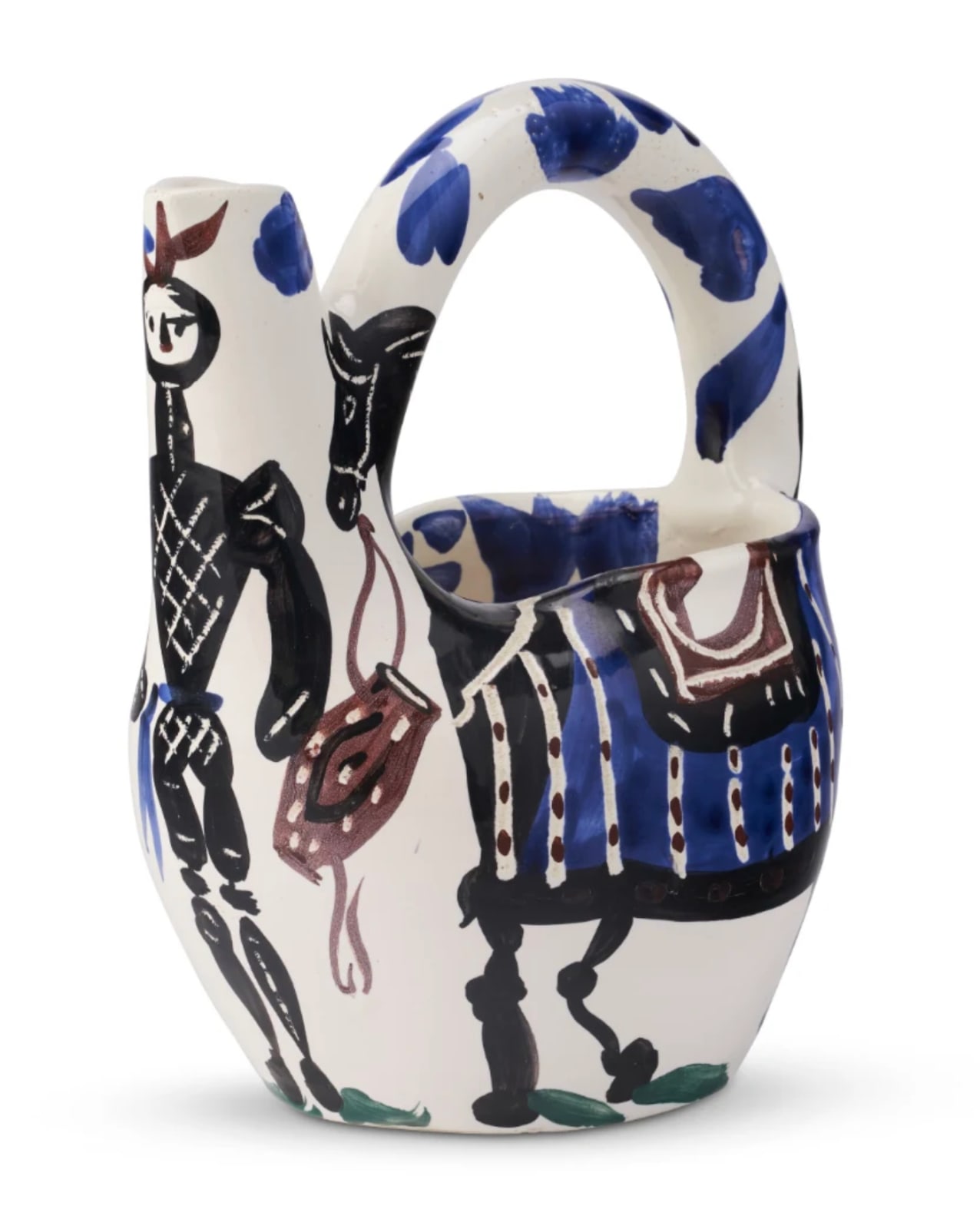
Pablo Picasso
Pablo Picasso’s Cavalier et cheval (“Horse and Rider”) is a vivid celebration of movement, mythology, and the enduring dialogue between man and beast. Created in 1952 at the Madoura pottery workshop in Vallauris, this sculptural ceramic jug exemplifies Picasso’s gift for transforming everyday forms into animated works of art.
Painted in bold strokes of cobalt blue, black, and earthy brown, the piece depicts a stylized rider leading a decorated horse, the figures dancing around the vessel’s rounded form. The handle’s arc echoes the rhythm of the composition, integrating structure and imagery into a single, fluid gesture.
Cavalier et cheval reflects Picasso’s fascination with Mediterranean traditions and classical subjects - heroic riders, mythic animals, and the rituals of daily life - translated through the spontaneity and humor of his ceramic practice. At once ancient and modern, the work captures the artist’s lifelong pursuit of vitality: a sense that every line, curve, and brushstroke might leap into motion at any moment.